Exploring Eswatini. Why We Keep Returning.
- mantramag
- Jul 29
- 6 min read

Aliz Ertler
There are so many interesting places on our planet that, in general, I think I’d rather explore new places than return to places I’ve already been. There is, however, one small country, the smallest in the Southern Hemisphere, which in 2002 became so close to my heart that I have been there four times.

Eswatini, formerly known as Swaziland, lies between South Africa and Mozambique, with no coastline. In 2018, to mark the 50th anniversary of the country’s independence, it was renamed Eswatini, the country’s original name, to signify departure from its colonial past.
TRAVELING WITH MOM
Out of my four visits, one was with my mother for her 75th birthday. I wanted to give her the most special present possible, which in my world is an African safari. It wasn’t too difficult to choose where to go: Eswatini has everything you would expect from a safari. In a small but diverse country, you can travel without the crowds, at affordable prices and in complete safety.
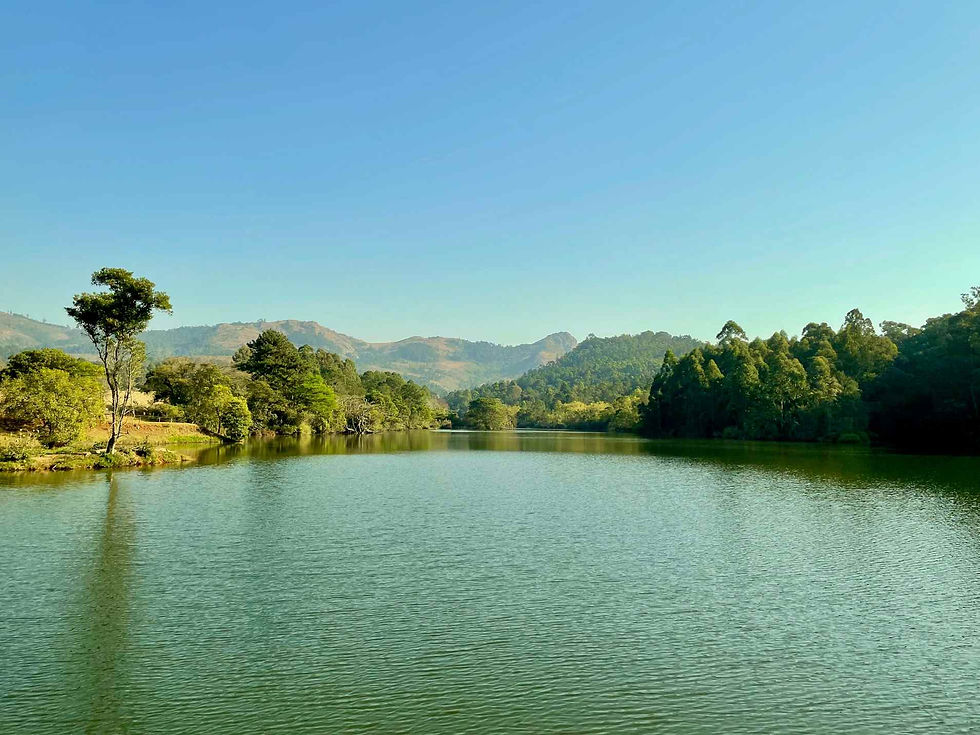
The Mlilwane Game Reserve
In Eswatini, we spent a few days in three of the big game parks that I know well, which are in three completely different natural settings. The Mlilwane Game Reserve is a lush green landscape dotted with mountains; you can wander for hours on foot and it’s a sight to behold with its many antelopes and zebras. The animals are so accustomed to humans that we were able to get quite close to them. My mother really enjoyed their company, the silence, and our picnic lunches in front of our thatched-roofed rondavels, reminiscent of traditional African buildings.
In the evening, we warmed up by the campfire with the warthogs and had a good chat and laugh. We also wandered to the nearby craft market; I love the items on sale here: whether glass, wood, metal, or textiles, they show incredible creativity.
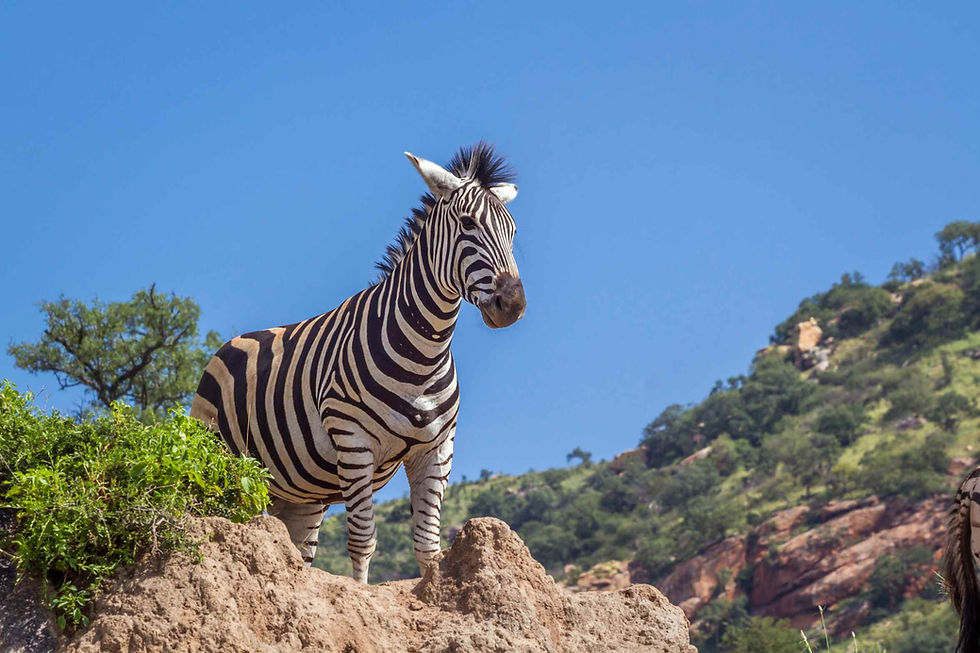
Mkhaya Reserve
We spent one night in my favorite place: the Mkhaya Reserve, which I first visited in 2002. I had volunteered here for five weeks; of course, in those days, I stayed in tents, not the luxurious Stone Camp. The walls of the Stone Camp buildings are made of stone, but they are only about a meter high, with stone pillars and wooden beams supporting the thatched roof. All the furnishings are made of natural materials. There is no electricity in the forest, but many petrol lamps create a fairy-tale atmosphere, and the house even has a bathtub. Sleeping surrounded by the sounds of the African wilderness is an extraordinary experience!
During the day, we went on safari in open Land Rovers that seemed to be a thousand years old. You’re almost guaranteed to see rhinos, but there’s also a good chance that you’ll see elephants or buffalo. And, of course, we saw giraffes, antelopes, birds, beetles, and many unknown plants. Mum was a little afraid to see the big, dangerous animals, but in the end, she experienced it as I had hoped: filled with peace at the sight of wild animals in their natural habitat while we quietly observed.
Hlane National Park
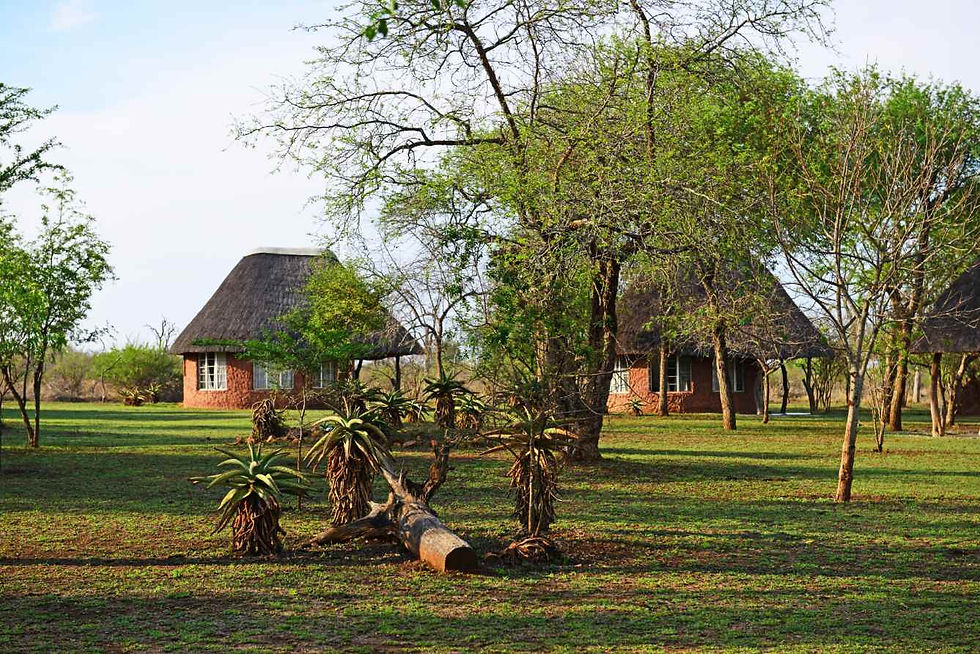
Our last stop was Hlane National Park, which was a special experience because my mother was born under the sign of the lion, and we managed to see real lions in the wild. We were also able to admire the rhinos gathering at the nearby watering hole from the open-sided restaurant. I dare to hope that my mum had as much fun on this trip as I did.
VOLUNTEERING
My childhood dream of seeing the animals of the savannah with my own eyes was realized in my 20s, but the experience was so powerful that I knew I wanted to do it again and again. I understood that there are two kinds of people: those who love Africa and those who have never been there.
There is nothing like the anticipation of searching the bush, watching for tracks on the road, scanning the horizon, looking for animals resting in the shade, and craning your head at every moving branch. Yes, my eyes have sharpened, I have learned a lot about the habits of wild animals, and I know that nature is not a zoo. It takes endless patience, perseverance, and luck to see the animals of the wild. However, there is always something to see.
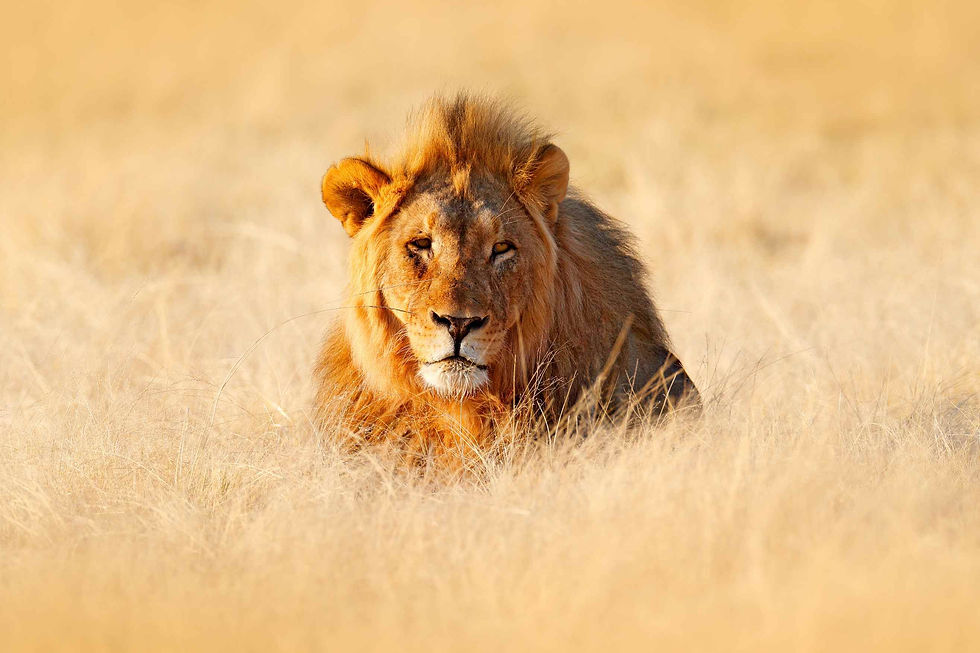
Wildlife
Birds, beetles, spiders, plants, trees, flowers, stones, clouds, sounds, and smells are all part of nature—and if you give yourself enough time and you are quiet enough, you might find your way back to your true self a little, when you were more a part of nature.
After my first safari in Tanzania in 1999, I felt I had to find a way to be among the wildlife, which didn’t just mean stopping for five minutes at the sight of an elephant or some other “attraction.” I wanted to be truly present and surrounded only by the sounds of nature, not distracted by car engines.

I found the right opportunity pretty quickly: five weeks volunteering in the Mkhaya Game Reserve. The reserve is a savanna, a bushland area that can be visited by tourists, but only by safari vehicles from the reserve, so there is less traffic and less disturbance to the animals. It is famous for its large population of rhinos and big game including elephant, buffalo, giraffe, zebra, and antelope.
Where We Stayed
Volunteers lived in tents; there was a simple bush toilet and a shower made of tree branches; and a water tap was the luxurious element of the camp. There was no electricity, of course. A wooden hut was used to store the food, which was delivered once a week and consisted mainly of pasta, potatoes, oatmeal, canned goods, and some fruit and vegetables. One side of the hut was open, and due to our inexperience, the fresh produce was often eaten by the warthogs that came to the hut at night.
We had a good laugh about this, of course, but the annoying thing was that we had very little food that could be eaten without cooking, and such visits only reduced our stock even further. Cooking was time-consuming, even if we just wanted to make tea, as we had to collect wood, make a fire, etc. We also had to be careful when collecting firewood as there were several poisonous trees in the area, and the smoke from them was also harmful.
Community
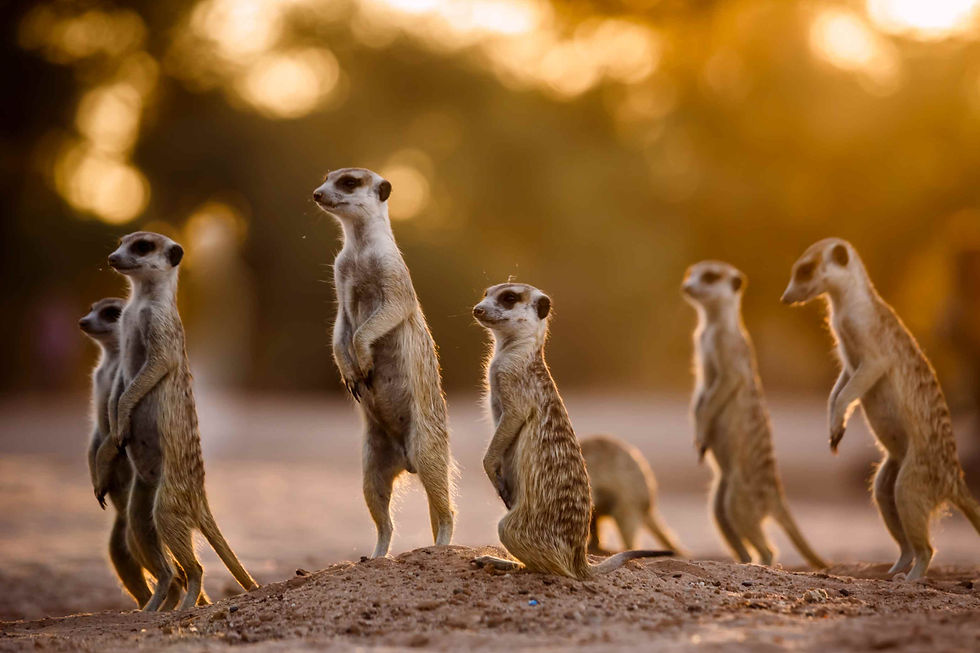
There were also a few other volunteers: Germans, Dutch, English, a Swiss girl, and a boy from Swaziland with us, Trombies. He knew nature and the park well, and his English was fluent. As there are no predators in the reserve, we walked everywhere with Trombies as our guide. We cleared the paths of tree branches, sometimes finding carcasses or traps set by poachers, which Trombies reported. Stone Camp was nearby, housing tourists.
Our work was really quite unpretentious, but nobody minded because we spent five or six hours a day walking around the reserve, observing our surroundings, and there was time for everything. Sometimes we spent hours at a watering hole (natural or artificial ponds), watching the animals, birds, and bugs coming and going. It was like a stage play: warthogs in from the right, elephants from the left, opening scene; then an ostrich appears from behind, drama, release; everyone exits in an orderly sequence.
The Rhinos
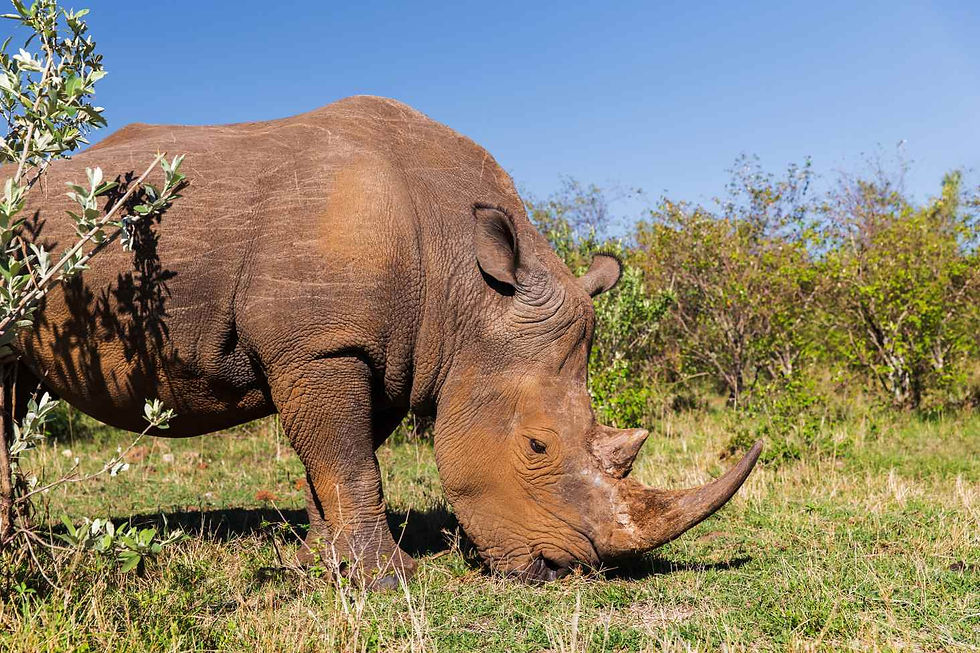
I haven’t even written a word about the animal species that was the greatest experience: the rhinos. Trombies recognized them all, knew which ones were aggressive and which were calmer. After a few weeks, I started to get the hang of it too. Hardly a day went by that we didn’t see rhinos, often six, eight, or twelve. They are incredibly peaceful, calm animals, surprisingly so because of their huge size. It is fascinating to watch them grazing and wallowing, the young ones calling attention to themselves with a sound similar to a cat’s, moving about, sleeping.
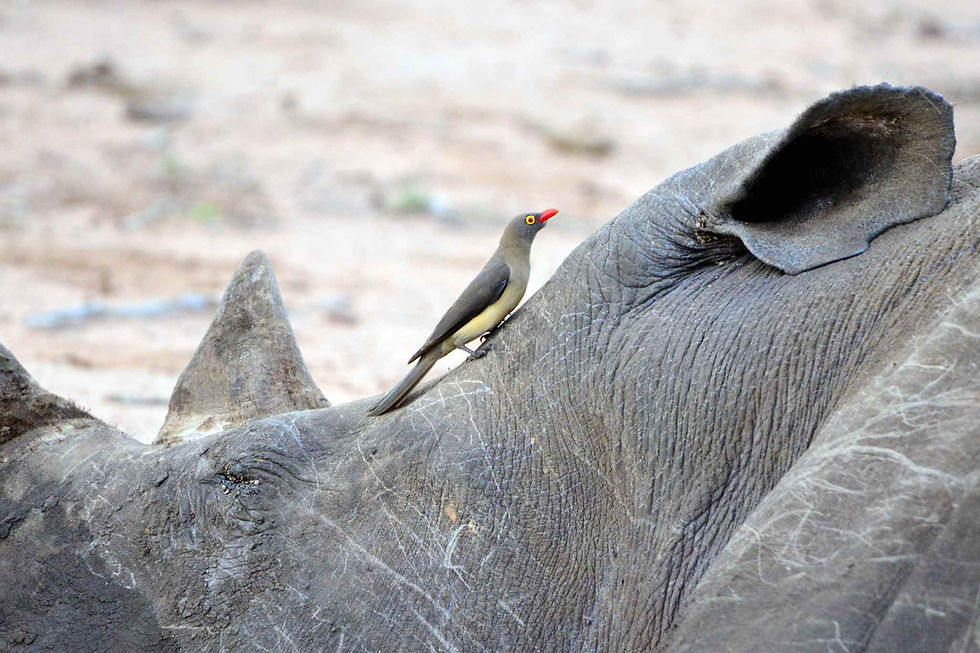
1. A Name with History
Formerly Swaziland, the country reclaimed its original name, Eswatini, in 2018 to mark its break from its colonial past.
2. Tiny but Diverse
The smallest country in the Southern Hemisphere, Eswatini packs in everything from misty highlands to sunbaked savannas.
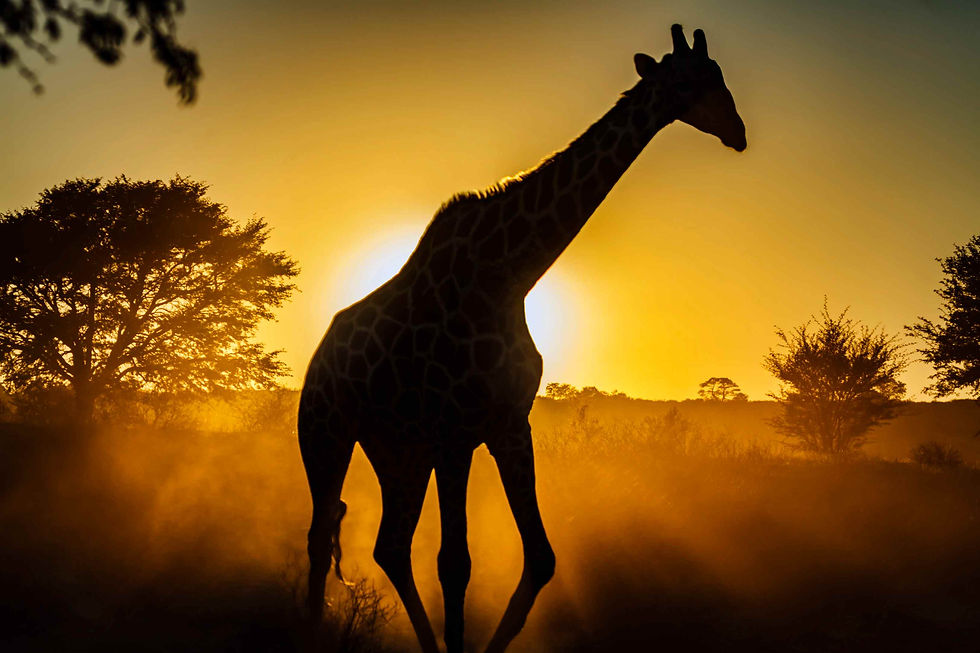
3. Safaris for Every Taste
Despite its size, Eswatini offers incredible safari experiences, from lush green mountains to classic African bush.
4. Handcrafted Treasures
From glass and wood to metal and textiles, Eswatini is a paradise for beautifully made local crafts.
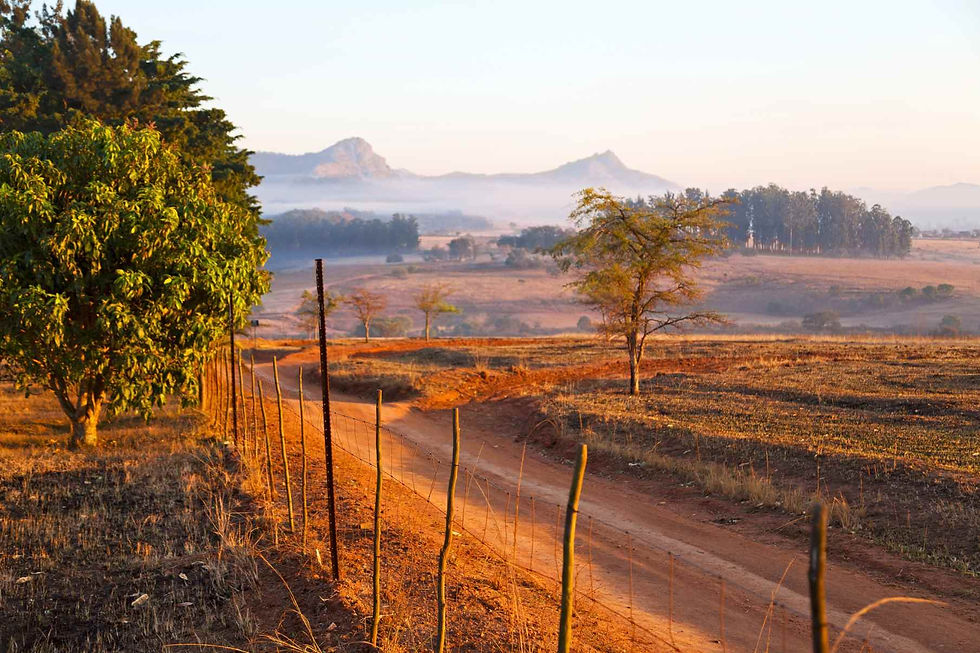
5. A Royal Ritual
Incwala, the country’s most sacred festival, is a grand celebration of renewal, unity, and kingship, featuring dancing, feasting, and tradition.
6. The Reed Dance Spectacle
During Umhlanga, thousands of young Swazi women perform a vibrant dance and present reeds to the Queen Mother in a stunning display of culture and pride.

Aliz Ertler is a Hungarian-born graphic designer and marketing consultant, who runs a small guesthouse, Wild Boar Cottage in Badacsonyörs, Hungary, with her Dutch husband.
Her book, Wanderlust – Trips Outside the Comfort Zone from Brazil to Kamchatka, is a 304-page journey featuring 617 photos and 100 stories from 40 countries, organized into 32 unique themes, ranging from art, biking, and camping to volunteering and wildlife.
The book offers readers a fresh perspective on lesser-known destinations, as well as new angles on familiar places. It invites readers to step outside their comfort zones and challenge preconceived notions about the world.
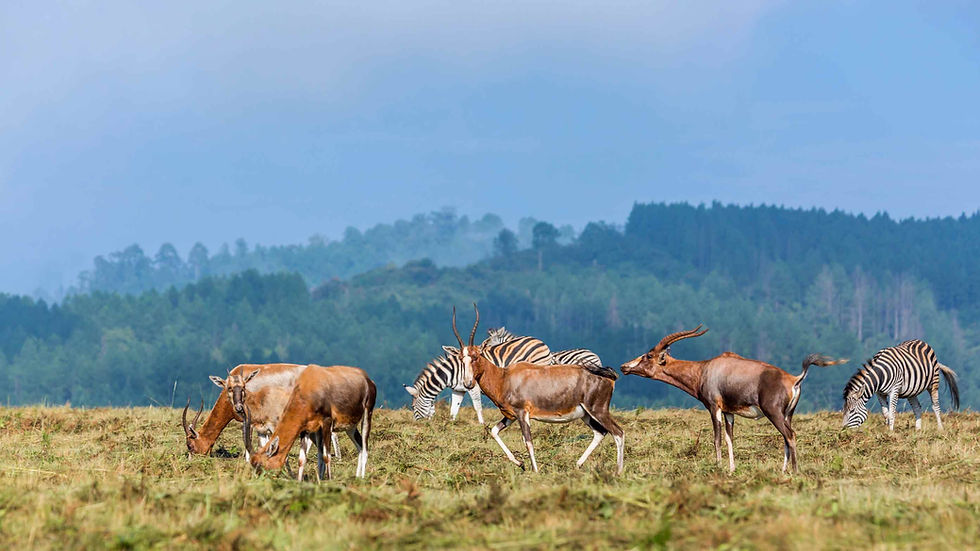

I’ve been curious about how people manage online learning along with busy schedules. Many students choose to pay someone to do my online class through a trusted and descriptive academic support platform. Services like myassignmenthelp offer expert guidance, ensuring assignments and discussions are handled professionally. This approach can ease stress for those juggling jobs, family, and education at once. It’s interesting to hear how others weigh the pros and cons of using such help. Does it free up your time for other priorities, or does it take away from the learning experience? I’d love to know your thoughts.
Beautiful reflections, I loved reading about Eswatini and why it draws you back. It’s amazing how places with raw nature can touch our hearts deeply. If anyone out there enjoys writing about animals, pet care, or nature, there is a chance to share those stories through Pets Care to Write For Us.
Many universities expect students to deliver flawless final research, but not everyone has the time or skills to achieve that. This is where a professional thesis writing service comes in. With the right thesis help, students can overcome challenges in research design, analysis, and presentation. Skilled thesis writers make sure that the content is original and well-researched. A custom thesis writing service is particularly useful for those who want a paper that reflects their specific academic path and voice.
Im very happy that you have chosen my piece to publish on your rewamped website. https://www.wanderlustbook.hu/